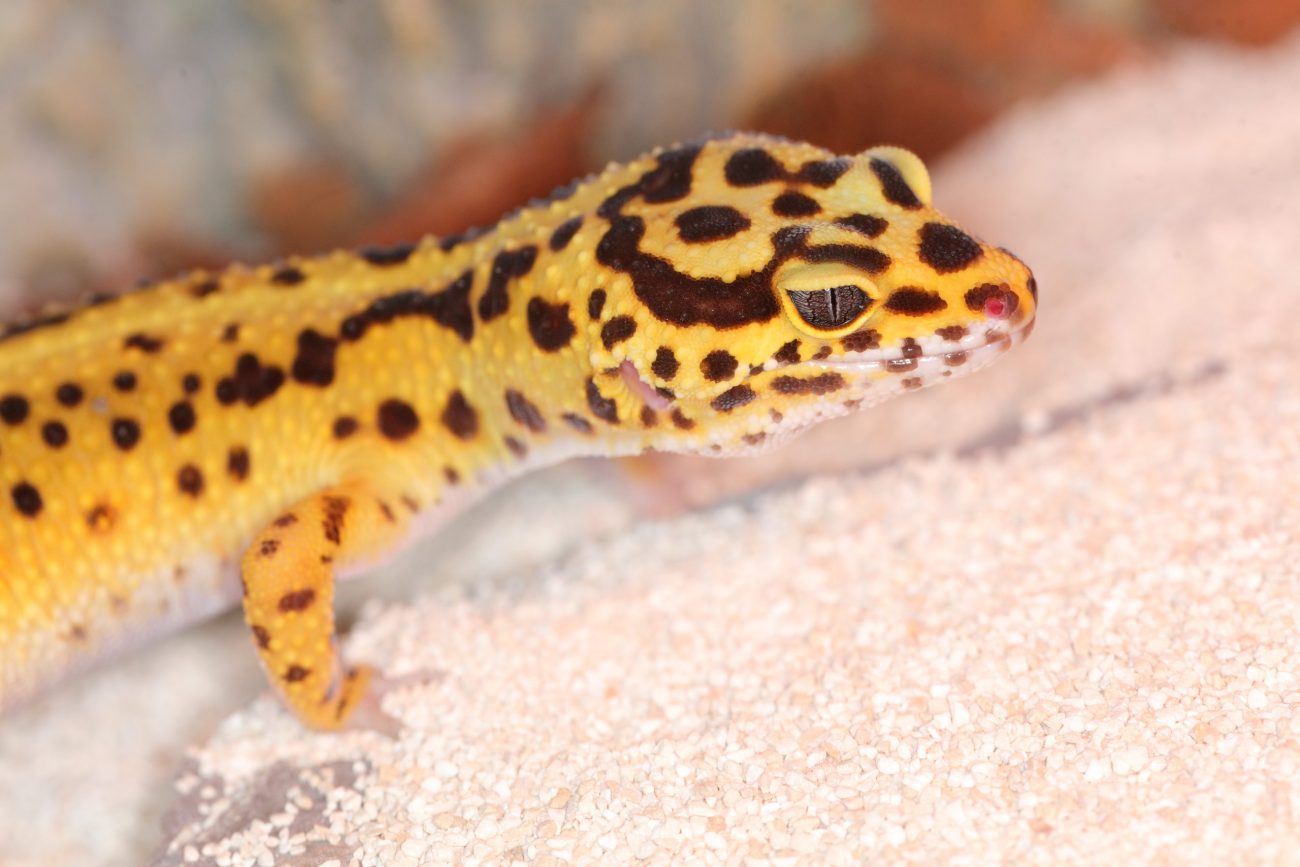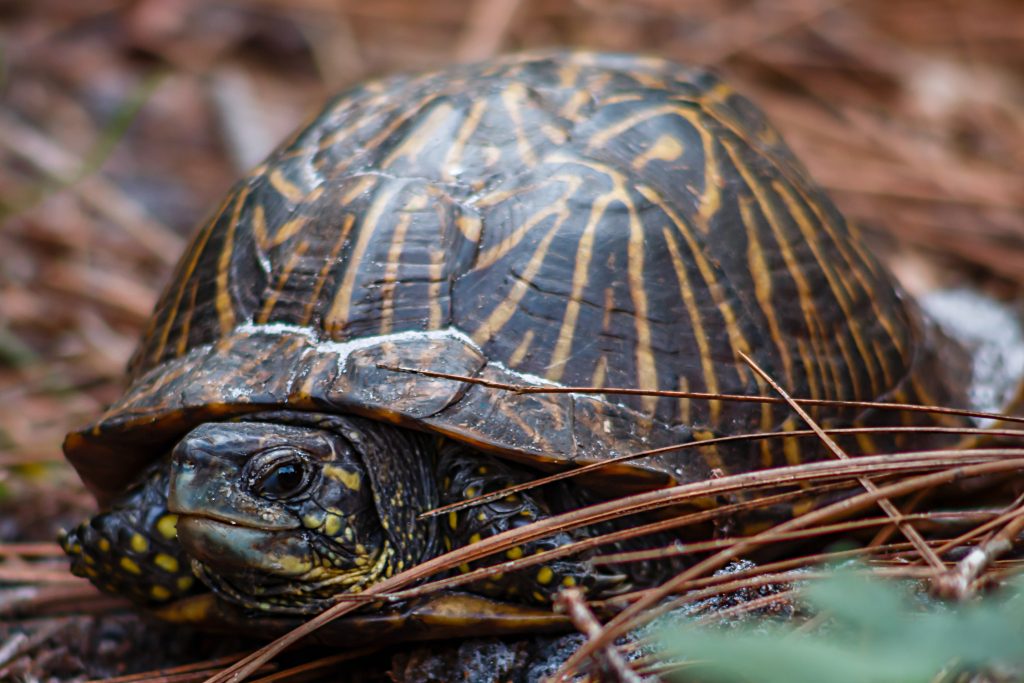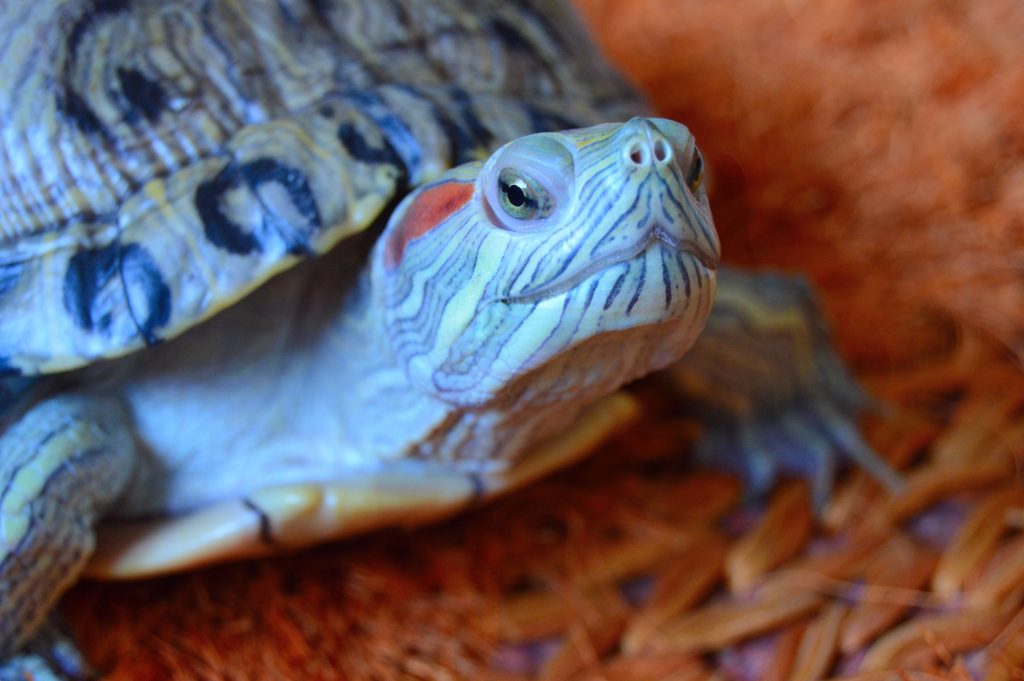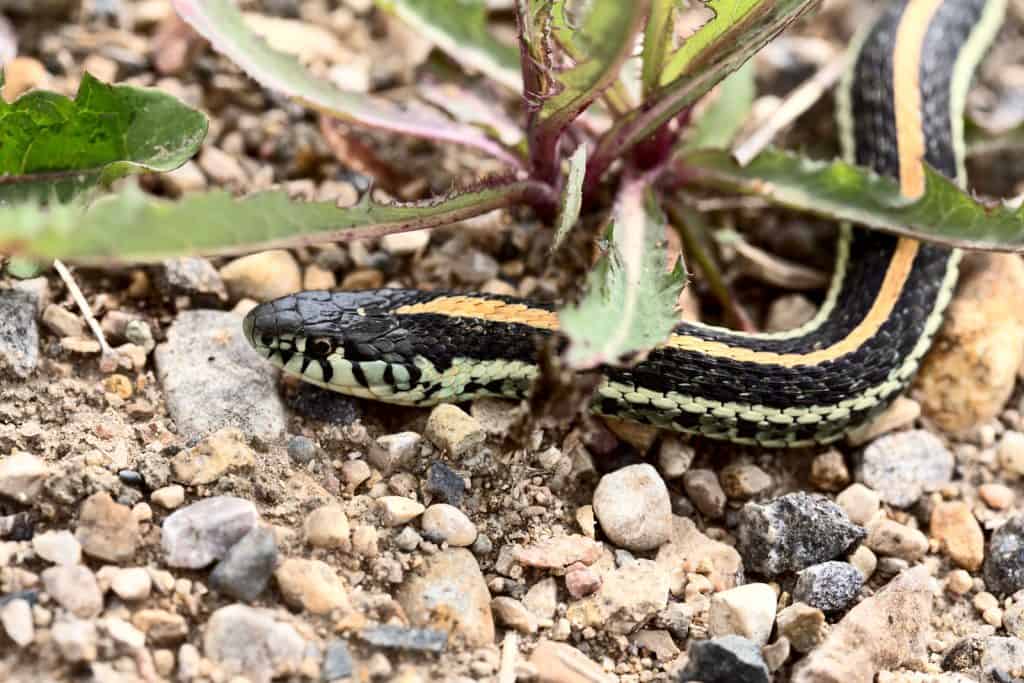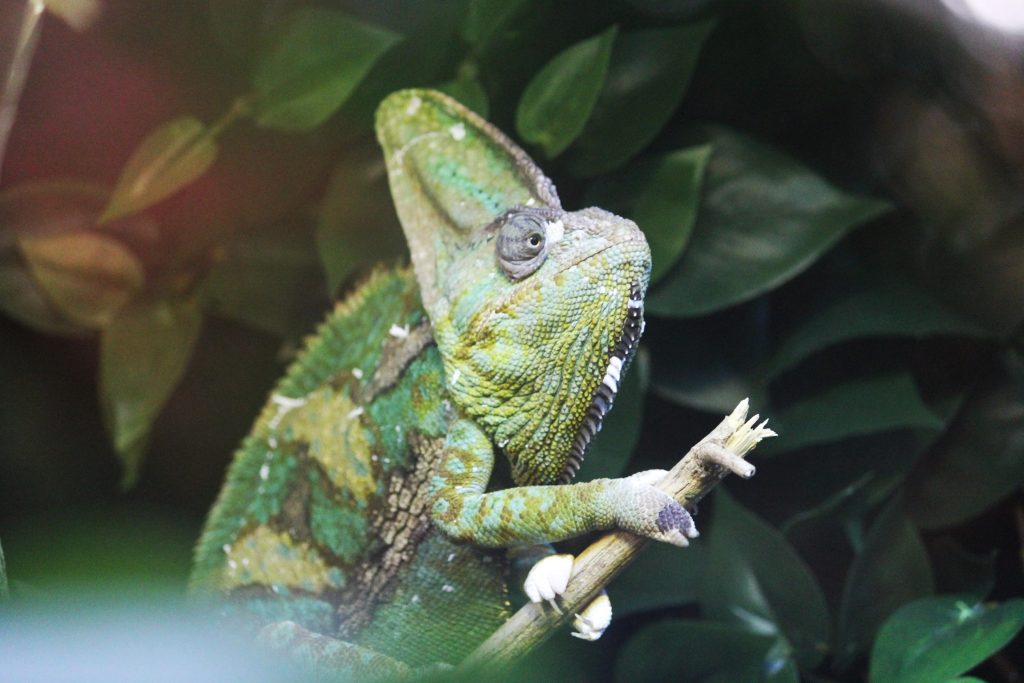Picking the right pet can be challenging, especially when you want a scaly friend for your young one. Some might think these animals are scary, but they can be amazing friends if you pick the right type. I’ve watched many families form strong bonds with these fascinating creatures.
For a reptile to be the best pet for a kid, think about these things:
- Cost-effective and easy to look after.
- Friendly, calm, and super fun to play with.
- Safe with hardly any risks.
- Tough and flexible.
So, thinking about a reptile for your young one? Check out these top 11 choices to find the best one for your family.
Top 11 Kid-Friendly Pet Reptiles
Being someone who loves pet reptiles, I know how crucial it is to pick the right ones for kids. Here are 11 reptiles that are just perfect for young companions.
1. Leopard Geckos
| Attribute | Detail |
| Scientific Name | Eublepharis macularius |
| Size | 0.5 – 0.9 feet (7-11 inches) |
| Lifespan | 10 – 20 years |
| Tank Size Requirement | 10 – 20 gallons |
Leopard geckos are small and hardy reptiles with really big eyes, a captivating sight! Their skin’s not smooth but has a kind of bumpy texture, which is soft to the touch. Moreover, they come in various colors, adding to their appeal. Now, if you’re thinking of getting one for a kid, here’s why it’s a splendid idea:
- Firstly, leopard geckos have a calm and gentle temperament, making them quite safe for kids.
- Because of their small size, perfect for young hands, they’re pretty easy to handle.
- When it comes to taking care of them, it’s pretty simple. A cozy habitat, basic heating, and a diet mostly of insects.
- Moreover, owning one can be educational. Kids not only get a pet but also learn valuable lessons about caring for animals and understanding reptiles.
2. Blue-Tongued Skink
| Feature | Details |
| Scientific Name | Tiliqua |
| Size | Up to 2 feet |
| Lifespan | 15-20 years |
| Tank Size Requirement | Minimum 30-gallon |
Blue-tongued skinks are fascinating lizards, especially for kids who love unique pets. They stand out with a notably blue tongue, just as their name suggests, and a solid body.
- These skinks are naturally gentle, so they usually don’t get aggressive. This makes them really good pets for kids.
- Their mild temperament means kids can hold them without much fuss, though always with adult supervision, to ensure neither the kid nor the skink gets startled.
- Maintenance is straightforward: a spacious enclosure, UV lighting, and consistent temperature regulation are essential.
- When it comes to food, they aren’t too picky—they like a mix of leafy greens, fruits, insects, and even small rodents sometimes. This offers a unique way for kids to discover what reptiles eat and how they live.
3. Corn Snakes
| Feature | Details |
| Scientific Name | Pantherophis guttatus |
| Size in Feet | 2 to 6 feet |
| Lifespan | Up to 23 years |
| Tank Size Requirement | At least 40 gallons |
While Corn Snakes might look exotic with their vibrant patterns, they’re among the most approachable and low-maintenance snakes you can own.
With their distinct colors, which can vary from a soft brownish-yellow shade to a brighter orange, highlighted by deep red patterns, these snakes truly stand out in the reptile world.
- Their nature is surprisingly gentle, and kids find them easy to interact with because they are so calm and friendly.
- Thanks to their simple demeanor and the fact that they’re not too tricky to handle, many beginners gravitate towards them as their first snake pet.
- Their upkeep isn’t demanding at all with a simple enclosure setup. And since they mostly munch on rodents, they’re not expensive to feed either.
4. Ball Pythons
| Attribute | Details |
| Scientific Name | Python regius |
| Average Size | 3-5 feet |
| Lifespan | 20 to 30 years |
| Tank Requirement | Minimum 40 gallons |
Ball Pythons are captivating snakes originally from the vast regions of sub-Saharan Africa. Their appearance is notable – with a blend of black and brown colors that help them blend in, paired with their robust form and uniquely shaped triangular heads.
- Families, especially those with children, are drawn to them mainly because they’re incredibly gentle and quite friendly.
- Instead of getting aggressive when scared, these snakes habitually roll up into a tight ball. Which is, by the way, where their name comes from.
- Given their medium size, kids find it neither too intimidating nor too challenging to handle them.
- And when it comes to looking after them, it’s pretty easy! They need a well-maintained habitat to live in and timely meals.
5. Box Turtles
| Attribute | Details |
| Scientific Name | Terrapene |
| Average Size | 5-7 inches |
| Lifespan | 30 to 40 years |
| Tank Requirement | 20-gallon |
Box Turtles, members of the Terrapene family, have a unique and interesting look because of their hinged shells. This unique feature lets them completely hide inside it for safety.
- Many kids like them because they’re gentle and hardly ever show aggressive behavior.
- When they feel threatened or scared, they pull themselves inside their shells—making them safe from potential dangers and easing parents’ worries.
- When it comes to food, they’re pretty flexible eaters. They munch on green veggies, insets, and some fruits.
- However, their housing and climatic preferences necessitate thorough research to ensure their well-being.
6. Bearded Dragons
| Attribute | Details |
| Scientific Name | Pogona vitticeps |
| Average Size | ~1.3 to 2 feet |
| Lifespan | 8 to 10 years |
| Tank Size Requirement | 20-40 gallons |
Bearded Dragons, known for their unique triangular faces and somewhat prickly skin, have long tails that make up a big part of their length.
- Kids who’ve grown and can handle more responsibilities find these friendly lizards a great choice.
- They’re pretty laid-back, and while they like spending time with humans, they aren’t fans of being held for too long.
- As for food, they aren’t too picky. They eat a mix of insects, greens, and sometimes small rodents. But remember, they need some extra calcium to stay strong and avoid illnesses like Metabolic bone disease (MBD).
- Their home needs are specific: a large-sized tank and the specific lighting. But looking after them isn’t too tricky once you get that sorted out.
7. Red-Eared Slider
| Attribute | Details |
| Scientific Name | Trachemys scripta elegans |
| Average Size | ~1-foot |
| Lifespan | Up to 40 years |
| Tank Size Requirement | Minimum 50 gallons |
The Red-eared slider turtles are easily spotted due to their bright green shells and those unique red patches; they look like “ears” near their heads. They also have colors like orange and yellow, making them even more captivating.
- These turtles are pretty calm and mostly safe, so kids like them.
- They’re generally peaceful creatures. However, if they feel bothered too often, they might snap a little, so it’s wise for older kids to handle them with some care.
- Looking after them isn’t too hard. They only need a good-sized water space with the proper filter and lights.
- And when it comes to food, they love to eat both plants and meat. Think of things like turtle food from the store, some fresh greens, tasty shrimp treats, and sometimes small fish.
8. Garter Snakes
| Aspect | Details |
| Scientific Name | Thamnophis |
| Size in Feet | 2 – 4 feet |
| Lifespan | 10+ years |
| Tank Size Requirement | 30 gallons or more |
Garter Snakes are pretty easy to spot. Their long, slender bodies are decorated with standout stripe patterns, a signature look for these North American natives.
- These snakes are chill in nature, and even if they bite, it won’t hurt. This means they’re a solid pick for youngsters.
- While they’re not huge fans of being held constantly, they’re gentle creatures. So, when kids handle them with a little respect and care, learning the snake’s limits, they get to understand reptile behavior.
- They require minimal tank space, and feeding them is a breeze. Think about little insects and, once in a while, some fish.
9. Veiled Chameleon
| Attribute | Details |
| Scientific Name | Chamaeleo calyptratus |
| Average Size | 1.5 to 2 feet |
| Lifespan | 4-8 years |
| Enclosure Requirement | At least 4 feet tall and 2 feet wide screened |
Veiled chameleons are known for their remarkable color-changing ability and unique appearance. These creatures, with impressive helmet-like structures on their heads, come from places like Yemen and Saudi Arabia.
- Generally, these chameleons are peaceful and easygoing around humans unless they feel threatened.
- While they look cool, they aren’t big fans of being touched or picked up. It can make them nervous. So, watching and enjoying them from a distance is better—which is good for teaching kids observation skills.
- Their home setup needs a tall cage with a screen for good air, special UV lights, and another light for them to bask up under.
- Regarding food, they mainly eat insects but will nibble on plants now and then.
10. Stinkpot Turtle

| Aspect | Details |
| Scientific Name | Sternotherus odoratus |
| Size | 2-5.5 inches |
| Lifespan | Up to 50 years |
| Tank Size Requirement | Minimum 30 gallons |
Some people also call it the Common Musk Turtle. This particular turtle can be found in southeastern Canada and the eastern parts of the United States.
- Even though they’re small pet reptiles, these turtles are full of lively energy. They’re curious creatures, always moving and exploring their watery homes. It’s fun for kids to sit and watch them do their thing.
- Regarding care, they’ll need a good, clean tank and some food, a mix of special turtle food, bugs, and sometimes a bit of green veggies.
- They might seem a bit shy at first, but once they get to know you, and if you’re always gentle, they’ll be more comfortable with their human caregiver.
11. Russian Tortoise
| Aspect | Details |
| Scientific Name | Testudo horsfieldii |
| Size in Feet | 8 to 10 inches |
| Lifespan | 40 – 50 years |
| Tank Size Requirement | At least 30 gallons |
The Russian Tortoise hails from the vast, rocky landscapes and dry desert areas of Central Asia. This small, robust creature is quite adaptable, so it doesn’t need special conditions to thrive.
- These tortoises are usually calm and quiet, and with some time, they can get used to being around kids, making them great pets for families.
- They are gentle by nature and rarely show aggressive behavior, so it’s pretty safe for children to be around them.
- But remember, even if they’re calm, you should always teach kids the right way to handle them; you wouldn’t want to scare them accidentally.
- Care is straightforward; they’ll need a suitable enclosure, the right warmth, and a balanced diet of small water animals and plants.
What Is the Easiest Pet Reptile To Take Care Of?
When considering a pet reptile that’s easy to look after, the Leopard Gecko is the top pick, perfect for youngsters.
- Firstly, they’re small creatures, so they don’t need a lot of room.
- Secondly, their calm nature means they’re not too fussy when held.
- And lastly, they eat insects, which is convenient for feeding.
This simplicity gives kids a great chance to learn about caring for pets, all while bonding with a cool, scaly friend.
What Is the Safest Reptile To Have as a Pet?
Want a safe reptile pet for kids? The Bearded Dragon is top-notch. Known for being super calm and friendly, they’re excellent with children. Even if things get surprising, they stay chill—keeping dangers at bay. From my observations, they’re also a breeze to handle, giving kids a confident and rewarding pet time.
To Sum It Up
Thinking about adding a reptile to your family is thrilling yet nerve-wracking. But things get easier when you get to know these amazing animals’ unique facts and needs. Picking the right reptile can really brighten up your home and teach kids some serious lessons – like being responsible, showing kindness, and admiring nature. If you decide to take this step, teaching kids how to handle and care for their new buddy correctly is crucial.
So, what reptile do you think fits best as your child’s pet? Or do you want more info on other reptiles? Please tell us what you think in the comments!

